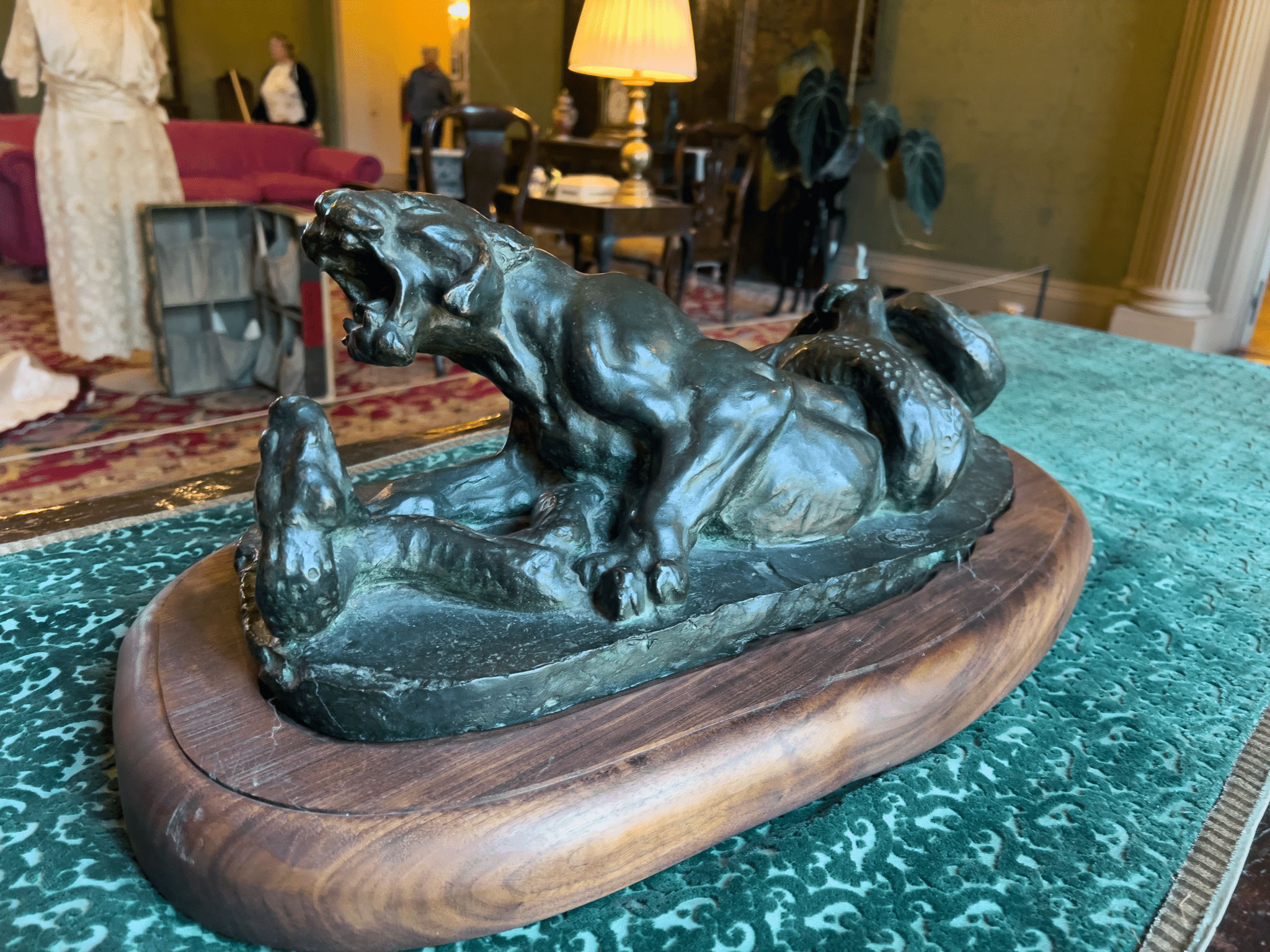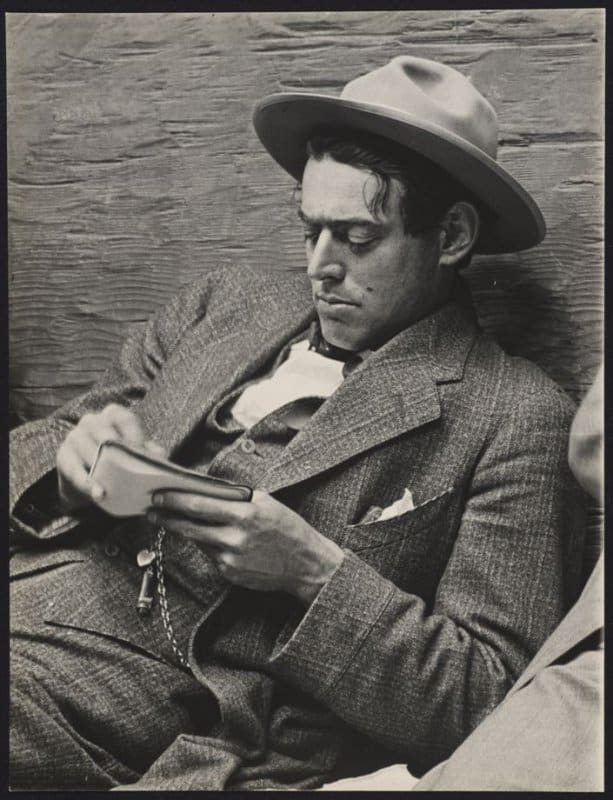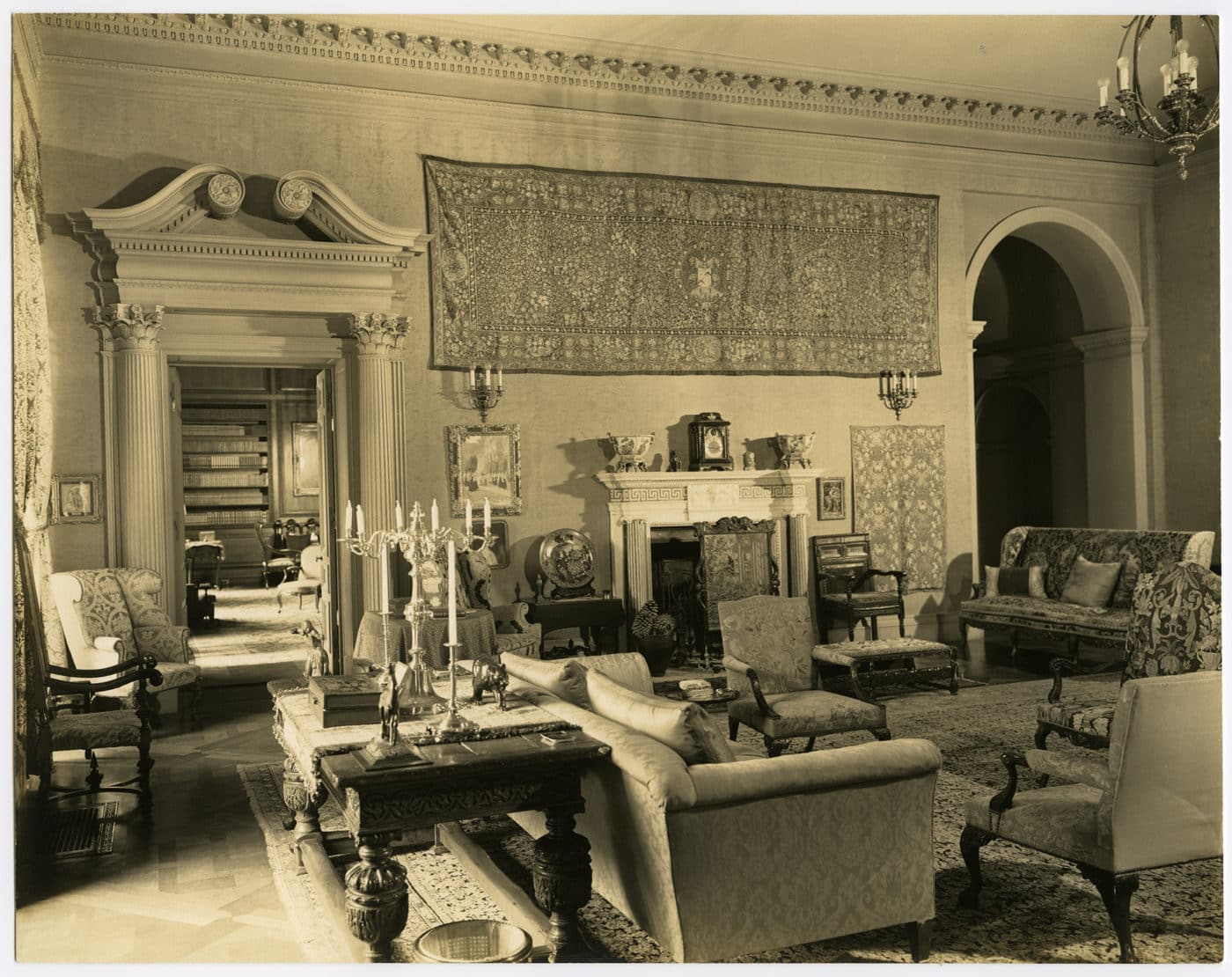Nature’s Conflict, in Bronze: A New Work by the Bourns’ Favorite Sculptor Joins Filoli’s Collection

Curator Kevin Wisney recently had a big success in his quest to return Filoli’s Lost Treasures to the historic House. Interpretation Manager Willa Brock sat down with him to learn more about FIloli’s newest piece of art and its significance.
———————————
Willa Brock: You recently acquired a new piece of art for our collection! Can you describe it and why you are excited?
Kevin Wisney: The newest addition to Filoli’s collection is a bronze sculpture by the artist Arthur Putnam, called Panther and Snake. It is about 28 inches long and 14 inches high, and it has a beautiful bronze patina.
The Bourns were friends with Putnam and loved his work. At the time of their deaths, they owned six different sculptures by him. They never owned this specific piece, but ones very similar. All the pieces disappeared from Filoli, likely sold. So I am proud to bring the first Putnam back to the collection since 1936!
Willa: Who was Arthur Putnam, and what was he known for?
Kevin: Arthur Putnam was a widely respected artist working here in San Francisco. He was known for his bronze sculptures of wild animals, which drew the praise of famed sculptor Auguste Rodin and won him a gold medal at the Panama-Pacific International Exposition. He also worked on many architectural commissions, like a decorative ceiling in the Flood Mansion and details on the Bank of California building in downtown San Francisco.
Putnam was a member of the Bohemian Club, where he likely met William Bourn and became friends. He was close with fellow artist Bruce Porter as well, who contributed to the design of Filoli’s Garden.

Willa: Can you tell me about the Bourn family’s decorating style at Filoli?
Kevin: The Bourns collected what they loved into this house. One place they did a lot of shopping for Filoli was the Panama-Pacific International Exposition, which was held in San Francisco in 1915 – just as they were moving into their new house here! The Exposition showcased thousands of artworks, and it was a mark of prestige to purchase one, since it would stay on display with your name on the tag.

The Bourns were very involved in the creation and management of the Exposition, and they bought several Putnam sculptures there as well as the Verdure Tapestry that hangs over the fireplace in the Reception Room.
Agnes Bourn purchased both items that were very expensive and items that were just a few pennies. She just picked what she liked to fill her home! We can tell from historic photos that Agnes didn’t give preferential treatment to the fancy objects over the less valuable. Everything was placed in a well-thought manner.
Willa: What was the process of finding this new sculpture? What challenges did you run into?
Kevin: I have alerts set up at auction houses and galleries all over the world, so I get a notification anytime an item comes up for sale that is tagged with “Putnam,” “Bourn,” “Filoli,” “Roth,” and so on. To decide whether to make a bid, I consider each item’s significance to our story. As I am recollecting the House, I am looking for items that tell the best story of the Bourn and of the time.
The greatest hurdle I have had in recollecting the Putnam collection is cost. Earlier this year, I entered into a sale for a couple of Putnam paperweights. It was a much larger auction house with a much larger customer base, and those Items quickly skyrocketed.
Willa: Where can visitors see the sculpture, and what should they keep in mind when they look at it?
Kevin: Panther and Snake is presently displayed in the Reception Room on the large table, where you can get up close to see the details. I would love for people to appreciate how vibrant and alive Putnam was able to make the bronze appear, and to imagine Agnes Bourn seeing her first sculpture by him and becoming enamored.
